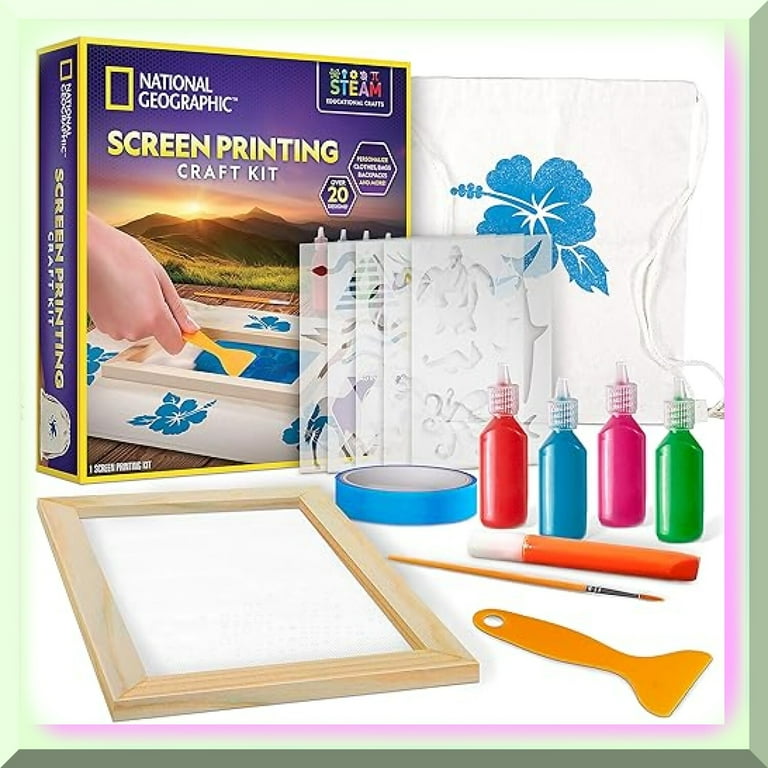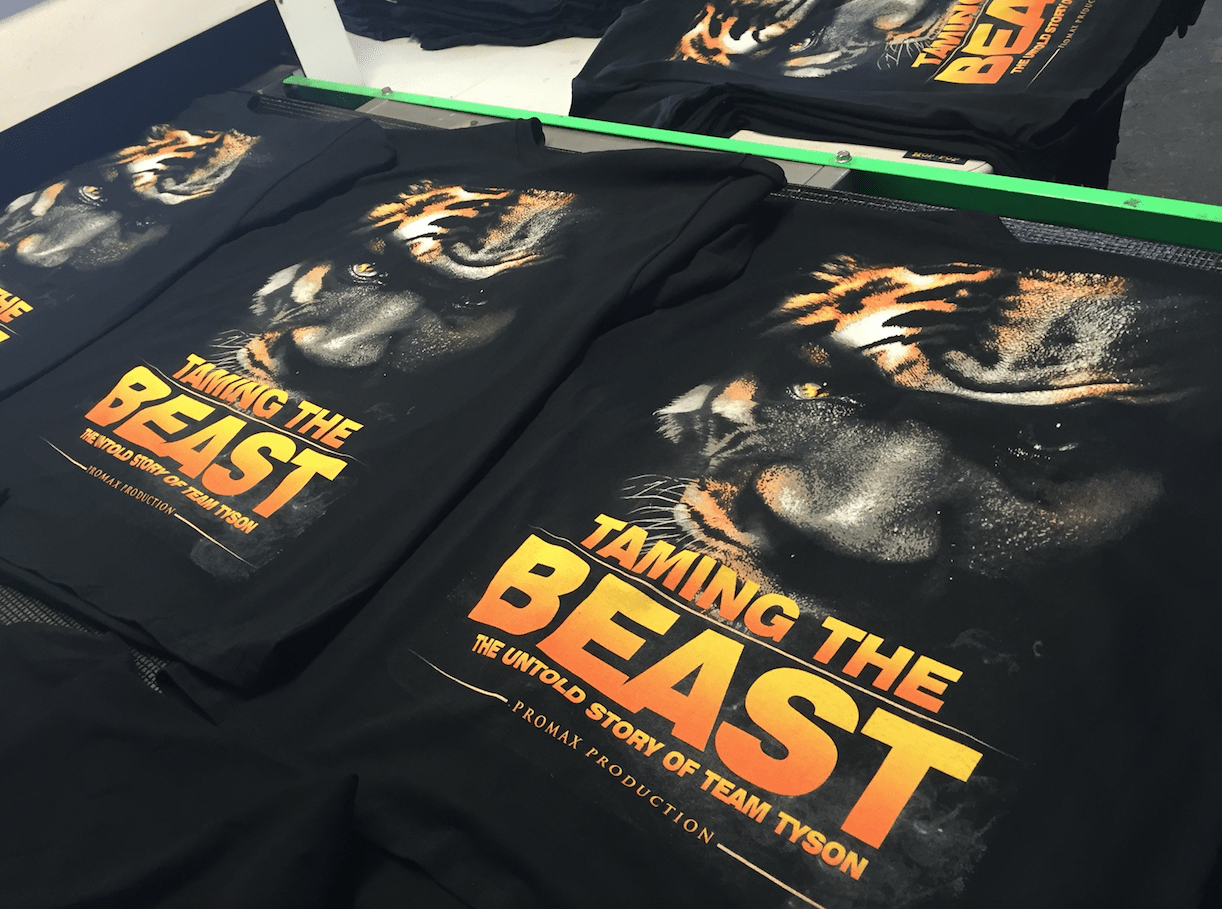High-Volume T-Shirt Printing for Schools and Organizations
Screen Printing Uncovered: Every Little Thing You Need to Understand About Tee and Garment Printing Methods
Display printing is an interesting method that integrates art with technique, offering endless opportunities for creativity. All set to explore the crucial elements that make display publishing an art kind?
The Basics of Display Printing: Exactly How It Works
When you plunge right into display printing, you'll discover it's both a scientific research and an art. At its core, screen printing involves creating a stencil, or display, that enables ink to pass through only in certain locations.
Next, you'll mix your inks and prepare your printing surface. Setting the display over the material, after that make use of a squeegee to press ink with the screen onto the garment. This process needs precision, as you want clear, vibrant prints. After printing, you'll heal the ink with warm, guaranteeing it sticks to the fabric and lasts via laundries. Each action is crucial, and grasping them will boost your display printing skills, changing basic garments right into distinct, meaningful items.
Sorts Of Display Printing Strategies
When you realize the basics of display printing, it's time to check out the numerous methods that can raise your layouts. One popular technique is standard display printing, where ink is pushed with a stenciled display. This method is fantastic for strong, vibrant colors. Then there's water-based ink printing, which uses a softer feel and is green, but it requires a different method to treating.
One more choice is plastisol printing, understood for its longevity and brilliant shades, making it a favorite for several brand names. Experiment with halftone printing to produce gradient results and complex designs.
Important Equipment for Display Printing
To accomplish magnificent outcomes in screen printing, having the ideal devices is essential. You'll require a sturdy screen printing framework, which holds the mesh that moves your style onto the garment. Next off, spend in top notch mops; these are essential for applying ink evenly across the screen.
Picking the Right Inks and Products
When choosing inks and materials for display printing, you require to take right into account the type of ink that functions finest for your job. Think of material compatibility to guarantee your designs look last and fantastic lengthy. Check out environmentally friendly ink options to make your printing procedure more lasting.
Kinds Of Screen Inks
Choosing the appropriate screen ink is essential for accomplishing vivid, sturdy prints that satisfy your task's needs. There are a number of kinds of screen inks to take a look at. Specialty inks, such as metallic or glow-in-the-dark, can add special results to your designs.

Material Compatibility Considerations
Recognizing fabric compatibility is vital for achieving top quality screen prints, particularly considering that different materials respond uniquely to various inks. When choosing inks, consider the textile kind-- cotton, polyester, or blends. For cotton, water-based inks function well, providing gentleness and breathability. Polyester, on the other hand, typically requires plastisol inks for better bond and dynamic colors. You may need to make use of a mix of both types if you're printing on blends. Constantly check your inks on example fabric to assure they adhere appropriately and keep color honesty. In addition, keep in mind that textile weight and appearance can influence the final end result, so selecting the right ink and product combo is essential for your task's success.
Eco-Friendly Ink Options
Environmentally friendly inks are ending up being a popular option for screen printers who want to reduce their environmental impact while keeping top quality. When selecting inks, consider water-based inks, which are much less dangerous and much easier to clean up compared to conventional solvents.
In addition, try to find inks made from renewable sources, such as soy or vegetable-based alternatives. By selecting the best inks and products, you'll not only produce stunning designs but also add to an extra sustainable printing procedure. Make the switch, and your prints will certainly show your commitment to the atmosphere!
Preparing Your Design for Screen Printing

Submit Style Needs
To assure your style looks dynamic and sharp on material, you'll need to pay attention to file style demands for screen printing. Start with vector documents like AI or EPS, as they can be scaled without losing high quality. If you utilize raster images, choose high-resolution data, such as TIFF or PNG, preferably at 300 DPI. Avoid utilizing JPEGs, as they can shed clarity when resized. Make sure your style has a clear history to prevent unwanted white sides on your prints. Finally, maintain color modes in mind; CMYK is typical for screen printing, so convert your RGB makes as necessary. By adhering to these standards, you'll set your artwork up for a successful print.
Color Separation Strategies
Color separation is an important action in preparing your style for screen printing, and mastering it can significantly improve your print top quality. You'll require to break your layout into specific shades, as each shade requires a separate screen during printing. Begin by recognizing all the colors in your design and develop layers for each one. You click for more info can use software program like Adobe Photoshop or Illustrator to isolate and separate shades effectively. Be certain to conserve each layer as a separate documents, typically in a layout like TIFF or PSD. This accuracy not just ensures precise shade depiction however likewise improves the printing process. By taking note of shade separation, you'll achieve vibrant and expert lead to your screen-printed garments.
Resolution and Size
Attaining the very best cause display printing starts with guaranteeing your design has the best resolution and size. Ideally, your art work needs to be at the very least 300 DPI (dots per inch) for sharp, clear prints. Your final item might look pixelated and amateur. if you make use of lower resolution.
When it comes to size, take into consideration the dimensions of your print location. Style your art work to match the last print size, ideally producing it in the actual measurements you'll be publishing. In this manner, you'll prevent any kind of unforeseen scaling problems.
Constantly examine your design in both vector and raster formats. Vector graphics can be scaled without losing top quality, making them suitable for screen printing. Preparing appropriately will guarantee your design looks incredible on every garment!
Step-by-Step Screen Printing Process
Screen printing is a dynamic procedure that enables you to develop vibrant designs on different surfaces. To start, you'll require a screen, solution, and your picked ink. Prepare your display by cleansing it completely. Next, use the emulsion evenly and allow it completely dry in a dark location. As soon as completely dry, reveal your display to light with your layout put on it, which will harden the emulsion where the light hits, creating a pattern - screen printing kit. look at this site
After rinsing the unexposed emulsion, your display prepares. Set it up on your printing surface area and straighten your garment under it. Put ink onto the display and utilize a squeegee to push the ink through the pattern onto the textile. Raise the display carefully and allow the print completely dry. Treat the ink using warm to guarantee durability. That's it! You've successfully screen published your style.
Tips for Effective Screen Printing Projects
While you're diving right into your display printing projects, keep in mind that preparation is vital to success. Begin by collecting all your materials-- inks, garments, displays, and squeegees. A clean work area helps protect against undesirable mistakes, so clean up prior to you begin.
Following, confirm your artwork is high-resolution and properly sized for your garment. Check your screen for correct exposure and tidy it thoroughly to prevent spots. When mixing your inks, comply with the producer's standards to achieve the best uniformity.
Throughout printing, apply also pressure with your squeegee for constant outcomes. Do not rush; take your time to confirm each print fulfills your standards. After printing, let your garments completely dry completely prior to taking care of or packaging them.
Lastly, constantly maintain an example of your help future recommendation. By doing this, you can evaluate your development and enhance your techniques in time. Satisfied printing!

Frequently Asked Questions
How much time Does It Take to Establish a Screen Printing Task?
Setting up a screen printing task usually takes about 30 minutes to an hour. You'll prepare the screens, mix inks, and adjust the press. The moment differs based upon complexity and experience, so stay arranged!
Can I Publish on Various Material Types Using the Very Same Technique?
Yes, you can print on different textile kinds utilizing the exact same method, but you'll require like this to readjust your settings and inks. Some materials absorb ink differently, so trying out warranties the most effective results for every product.
What Are Usual Errors to Avoid in Display Printing?
When display printing, prevent common blunders like utilizing the incorrect ink, disregarding appropriate exposure times, or skipping pre-press checks. Always evaluate your arrangement and keep tidy displays to ensure high quality results each time.
Exactly How Can I Effectively Clean and Preserve My Display Printing Devices?
To properly tidy and maintain your display printing equipment, you need to regularly clean screens with suitable solvents, examine squeegees for wear, and ensure all devices are kept dry and dust-free. Consistency boosts and avoids pricey repair work efficiency.
Is Display Printing Eco-friendly Contrasted to Other Approaches?
Screen printing can be a lot more ecologically friendly than other approaches, specifically if you utilize eco-conscious products and water-based inks. By choosing lasting supplies and techniques, you decrease waste and minimize your effect on the planet.
Screen Printing Uncovered: Whatever You Required to Know Regarding Tee and Garment Printing Techniques
At its core, screen printing includes developing a stencil, or display, that permits ink to pass via only in particular areas. Position the screen over the material, then utilize a squeegee to press ink via the screen onto the garment. One prominent technique is standard display printing, where ink is pressed via a stenciled screen.When choosing inks and materials for screen printing, you need to take into account the type of ink that functions finest for your task.